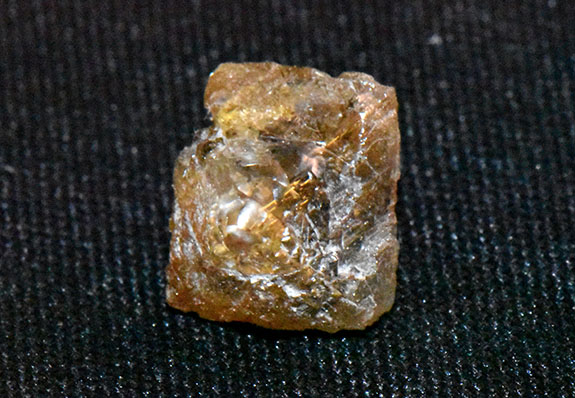David Anderson, a super-successful amateur diamond hunter and frequent visitor to Crater of Diamonds State Park in Murfreesboro, AR, recently scored a 3.29-carat brown sparkler — the biggest find of 2023.
Over the past 16 years, Anderson has amassed more than 400 diamonds, including 15 weighing more than 1 carat. His other top finds include a 3.83-carat yellow diamond found in December 2011 and a 6.19-carat white gem discovered in April 2014.
Anderson said a story about the park on the Travel Channel gave him the inspiration to try his luck at the only diamond site in the world that’s open to the general public.
“My first trip here was in 2007," Anderson said. "After I found my first diamond, a 1.5-carat white, I was hooked!”
About the size of an English pea, with a light brown color and octahedron shape, Anderson's newest treasure was found on March 4 near the West Drain of the park’s 37.5-acre diamond search area.
The Murfreesboro resident said he was wet-sifting soil when an unusual stone caught his eye.
“At first I thought it was quartz but wondered why it was so shiny,” said Anderson. “Once I picked it up, I realized it was a diamond!”
Successful diamond hunters often choose to name their gems. In this case, Anderson affectionately called his diamond "B.U.D." — short for Big Ugly Diamond.
Of course, when it comes to diamonds, beauty is in the eyes of the beholder and some people may see the brown diamond with a pitted surface and mottled brown color as something uniquely beautiful.
Park Interpreter Tayler Markham said the stone exhibits a "metallic shine typical of all diamonds found at the park, with a partially resorbed surface and lots of inclusions.”
Markham explained that all diamonds found at Crater of Diamonds State Park have gone through partial resorption during the eruption that brought them to the surface.
"Magma in the volcanic pipe melted the diamonds’ outer surfaces and gave them smooth, rounded edges," Markham added. "Larger diamonds like Mr. Anderson’s may have rough areas on the surface, but you can still find signs of resorption on the corners and edges.”
According to the Gemological Association of America (GIA), the kimberlite magma that brings diamonds to the surface from deep in the Earth can effect the external surface and internal features of a diamond. The diamond crystal can be dissolved to form secondary shapes by the partial removal of crystalline diamond in a geological process known as dissolution or resorption.
Writes the GIA, "Left alone without dissolution, diamond will form a perfect octahedron or a cube. But with dissolution, diamond can change from an octahedron to other forms, such as dodecahedron (12 faces) or tetrahexahedron (24 faces), and even form “irregular” diamonds with no discernible shape.
As of this publication, 124 diamonds have been registered at Crater of Diamonds State Park this year. Since the park opened in 1972, visitors have registered 35,250 diamonds.
Amazingly, even though the park has welcomed more than 4.6 million guests over that time, Anderson alone has accounted for more than 1% of that total.
According to the park's press release, Anderson typically sells his diamonds locally and plans to sell "B.U.D." as well.
Credits: Arkansas Department of Parks, Heritage and Tourism.



